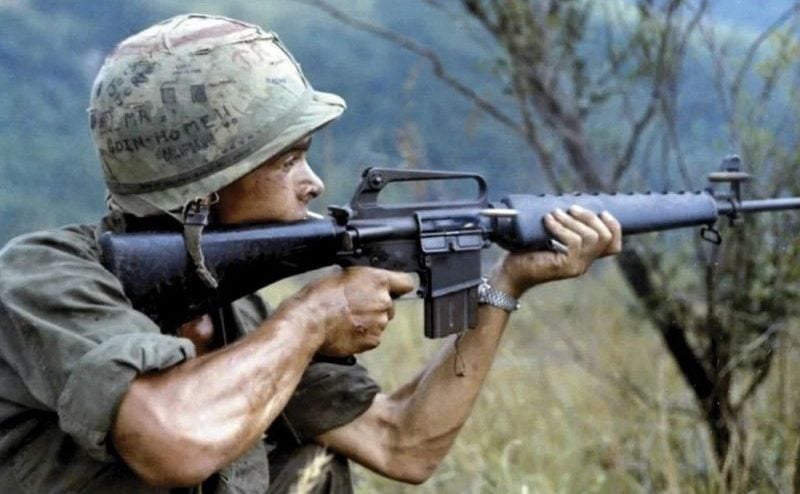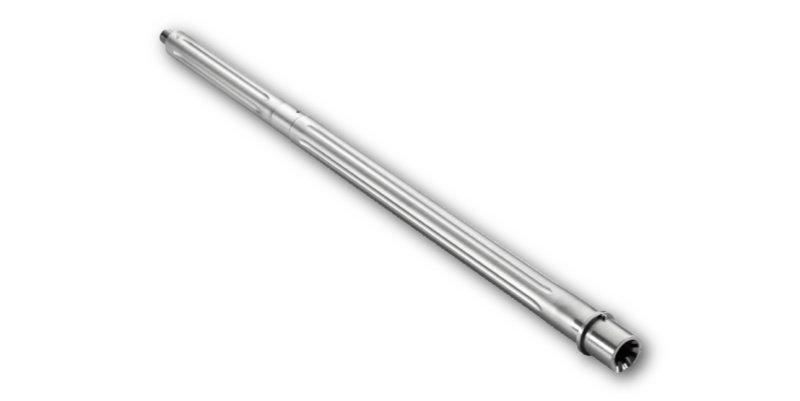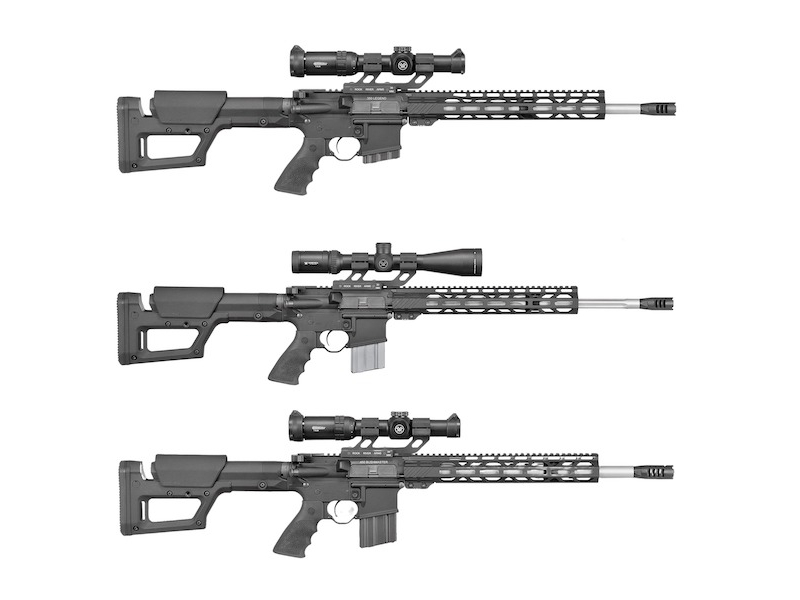If you’ve been rifle shopping anytime recently, you’ve likely seen uppers or barrels listing caliber or chamber as .223 Wylde. The old .223 Wylde isn’t exactly new, but it’s made its way to the mainstream fairly recently. The .223 Wylde is not a type of ammo. You won’t find any .223 Wylde at your local gun store, and if you do, I advise you to approach with caution. The .223 Wylde is a specific type of chamber that’s an interesting blend of the classic 5.56 and .223 Remington chamber designs. Today, we are going to dive deep into the world of the wild Wylde chambering and give you the most in-depth examination of the chamber cut and why it exists.
History of the .223 Remington and the 5.56
To understand why Bill Wylde designed the chambering, we have to go back to the beginning of the development of both the .223 Remington and 5.56 calibers. The .223 Remington and 5.56 were developed as a joint venture between Remington, Fairchild Industries, and the U.S. Continental Army Command. The United States military wanted a lightweight, intermediate cartridge that could remain supersonic out to 500 yards.
Originally, the cartridge was called the .222 Remington Special, but it was renamed the .223 Remington. In 1963, the cartridge was adopted by the United States Army as the M193 cartridge, and the .223 Remington went on to become a small-bore cartridge popular with varmint hunters and recreational shooters.

The differences between the .223 Remington and 5.56 are notable. The 5.56 has a higher chamber pressure and runs at 58,000 psi, while the .223 Remington hits the 55,000 psi marker. The 5.56 NATO designation applies to only a few loads of ammo, like the M193 and M855. The .223 Remington has a bit more leeway, and any company can create whatever load they want with varying projectile weights, projectile designs, velocities, etc.
The 5.56 cases are thicker to accommodate the higher chamber pressures. Typically, people will point to the PSI difference and state that’s the reason why you can’t use 5.56 in a .223 Chamber, but you can use .223 Rem in a 5.56 chamber. They aren’t wrong, but we aren’t getting the whole story.
The Whole Story
The 5.56 chamber is different than the .223 Remington chamber, and I don’t just mean durability. The 5.56 chamber has a major dimensional difference in its freebore. Freebore is a section of the barrel in front of the case mouth that’s unrifled and smooth.

The freebore of the 5.56 chamber is both longer and wider than the .223 Remington. The 5.56 freebore length is .059 inches, and the .223 Rem has a freebore length of .025 inches. In terms of diameter, the 5.56 gives us a .226 diameter, whereas the .223 gives us a proper .224 diameter. (.223 projectiles are acutally .224 in diameter.) The biggest issue is the leade. The 5.56 Leade is .125 inches longer than the .223 Rem leade.

That doesn’t sound like a big difference, but when we are looking at the fine details of a firearm, it matters. It’s important enough that .223 and 5.56 have their own headspace gauges. If you tossed a 5.56 in a .223 Rem chamber, would the gun blow up? Probably not, but it’s most certainly not good for your gun, and you shouldn’t do that. The shorter leade will cause internal pressures to spike. If you tossed a .223 Remington in a 5.56 rifle, you’d be fine.
So Just Use 5.56
Why don’t we just use 5.56 chambers all around? Well, the chambers are looser, and when it comes to accuracy, you might want everything to be tight. The tighter .223 Remington chamber allows .223 Remington rifles to take advantage of the match-grade and super-accurate options available for the .223 Rem.

For most people, they could run a .223 Remington chamber raw, and it’ll work reliably. However, when you introduce automatic fire and battlefield conditions, things happen. That’s why that slightly looser chamber allows for better overall reliability.
Where the .223 Wylde Comes In
Finally, we’ve circled back to the .223 Wylde. Bill Wylde, a serious shooter, dreamed of a cartridge that could handle both .223 Remington and 5.56 with excellent accuracy. The 5.56 rounds are the cheapest stuff you can shoot, and sometimes you are just training and don’t need super-accurate ammo. Other times, you might be varmint hunting or competing and want total accuracy from your rifle.

It’s these situations where you want total accuracy, and the .223 Wylde offers that. The .223 Wylde blends the features of the .223 Remington and 5.56 chambers. First, the leade length is the same as a normal 5.56 chambering, so pressure spikes aren’t an issue. The freebore diameter is tightened down to the appropriate .224 inches. This combination gives us the safety to shoot 5.56 but the tight chamber to get the most out of .223 Remington loads.
The .223 Wylde chambering is a bit of the best of both worlds. You can throw 5.56 downrange safely all day long. Go out there and burn it down! At the same time, you can take a .223 Wylde chambered AR-15, hit the next NRA High Power match, and start throwing precision lead at 500 yards.
The Perfect Chamber!
So, should we all use the .223 Wylde chambering? Well, most of us will be happy with that chambering. However, remember some of the reliability in extraction comes from the looser diameter. The tight freebore diameter of the .223 Wylde isn’t appropriate for a military rifle or, arguably, a duty rifle.
I don’t want this spun into an article talking about how Travis said the .223 Wylde isn’t reliable. It is reliable for 99.99% of shooters in 99.99% of situations. However, it’s still a bit of a wildcat chambering. A 5.56 chamber is still a must for heavy-use rifles and promotes the ultimate degree of reliability for duty rifles.
The .223 Wylde is a great advancement in the world of AR-15s. We are getting a very versatile option for the vast majority of shooters. Plus, Wylde is a great name for a chambering that does it all.

